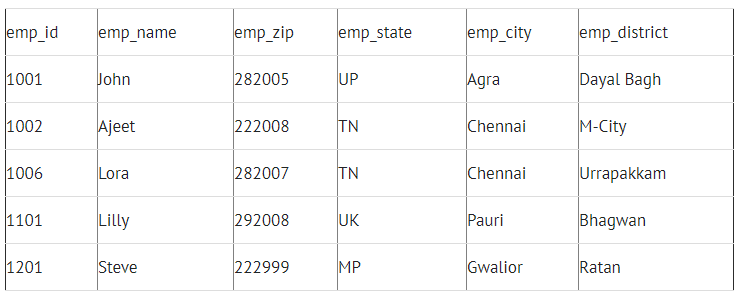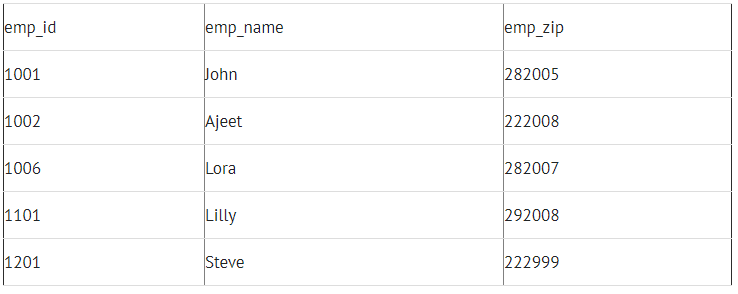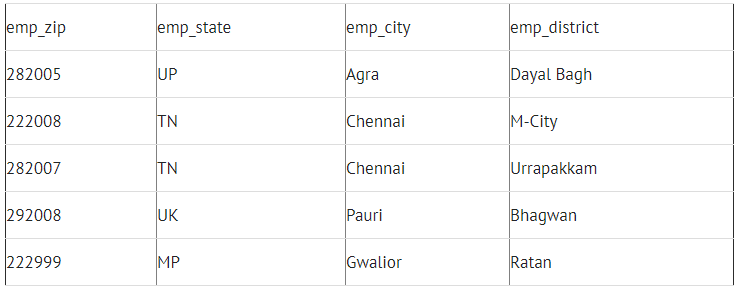DBMS Third Normal form (3NF)
A table design is said to be in 3NF if both the following conditions hold:
Table must be in 2NF
Transitive functional dependency of non-prime attribute on any super key should be removed. An attribute that is not part of any candidate key is known as non-prime attribute.
In other words 3NF can be explained like this: A table is in 3NF if it is in 2NF and for each functional dependency X-> Y at least one of the following conditions hold:
X is a super key of table
Y is a prime attribute of table
An attribute that is a part of one of the candidate keys is known as prime attribute.
Example
Suppose a company wants to store the complete address of each employee, they create a table named employee_details that looks like this:

Super keys: {emp_id}, {emp_id, emp_name}, {emp_id, emp_name, emp_zip}…so on
Candidate Keys: {emp_id}
Non-prime attributes: all attributes except emp_id are non-prime as they are not part of any candidate keys.
Here, emp_state, emp_city & emp_district dependent on emp_zip. And, emp_zip is dependent on emp_id that makes non-prime attributes (emp_state, emp_city & emp_district) transitively dependent on super key (emp_id). This violates the rule of 3NF.
To make this table complies with 3NF we have to break the table into two tables to remove the transitive dependency:
employee table:

employee_zip table:




Leave Comment